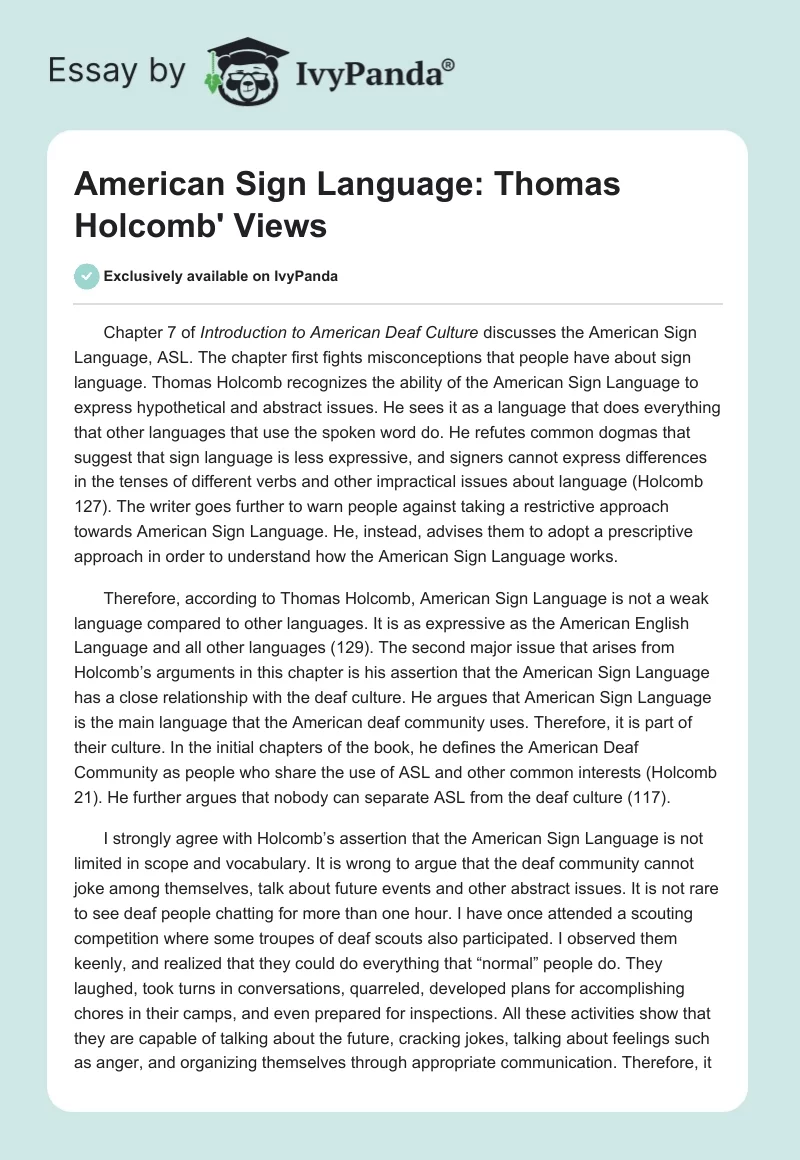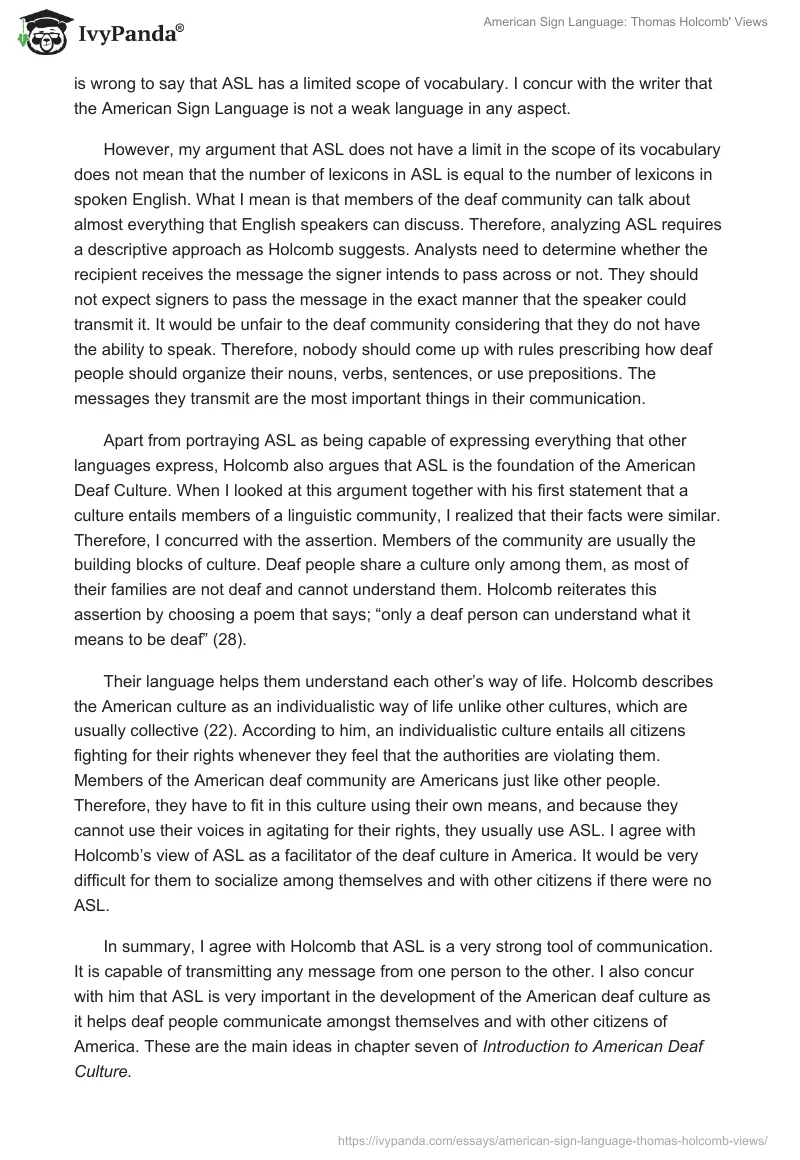Chapter 7 of Introduction to American Deaf Culture discusses the American Sign Language, ASL. The chapter first fights misconceptions that people have about sign language. Thomas Holcomb recognizes the ability of the American Sign Language to express hypothetical and abstract issues. He sees it as a language that does everything that other languages that use the spoken word do. He refutes common dogmas that suggest that sign language is less expressive, and signers cannot express differences in the tenses of different verbs and other impractical issues about language (Holcomb 127). The writer goes further to warn people against taking a restrictive approach towards American Sign Language. He, instead, advises them to adopt a prescriptive approach in order to understand how the American Sign Language works.
Therefore, according to Thomas Holcomb, American Sign Language is not a weak language compared to other languages. It is as expressive as the American English Language and all other languages (129). The second major issue that arises from Holcomb’s arguments in this chapter is his assertion that the American Sign Language has a close relationship with the deaf culture. He argues that American Sign Language is the main language that the American deaf community uses. Therefore, it is part of their culture. In the initial chapters of the book, he defines the American Deaf Community as people who share the use of ASL and other common interests (Holcomb 21). He further argues that nobody can separate ASL from the deaf culture (117).
I strongly agree with Holcomb’s assertion that the American Sign Language is not limited in scope and vocabulary. It is wrong to argue that the deaf community cannot joke among themselves, talk about future events and other abstract issues. It is not rare to see deaf people chatting for more than one hour. I have once attended a scouting competition where some troupes of deaf scouts also participated. I observed them keenly, and realized that they could do everything that “normal” people do. They laughed, took turns in conversations, quarreled, developed plans for accomplishing chores in their camps, and even prepared for inspections. All these activities show that they are capable of talking about the future, cracking jokes, talking about feelings such as anger, and organizing themselves through appropriate communication. Therefore, it is wrong to say that ASL has a limited scope of vocabulary. I concur with the writer that the American Sign Language is not a weak language in any aspect.
However, my argument that ASL does not have a limit in the scope of its vocabulary does not mean that the number of lexicons in ASL is equal to the number of lexicons in spoken English. What I mean is that members of the deaf community can talk about almost everything that English speakers can discuss. Therefore, analyzing ASL requires a descriptive approach as Holcomb suggests. Analysts need to determine whether the recipient receives the message the signer intends to pass across or not. They should not expect signers to pass the message in the exact manner that the speaker could transmit it. It would be unfair to the deaf community considering that they do not have the ability to speak. Therefore, nobody should come up with rules prescribing how deaf people should organize their nouns, verbs, sentences, or use prepositions. The messages they transmit are the most important things in their communication.
Apart from portraying ASL as being capable of expressing everything that other languages express, Holcomb also argues that ASL is the foundation of the American Deaf Culture. When I looked at this argument together with his first statement that a culture entails members of a linguistic community, I realized that their facts were similar. Therefore, I concurred with the assertion. Members of the community are usually the building blocks of culture. Deaf people share a culture only among them, as most of their families are not deaf and cannot understand them. Holcomb reiterates this assertion by choosing a poem that says; “only a deaf person can understand what it means to be deaf” (28).
Their language helps them understand each other’s way of life. Holcomb describes the American culture as an individualistic way of life unlike other cultures, which are usually collective (22). According to him, an individualistic culture entails all citizens fighting for their rights whenever they feel that the authorities are violating them. Members of the American deaf community are Americans just like other people. Therefore, they have to fit in this culture using their own means, and because they cannot use their voices in agitating for their rights, they usually use ASL. I agree with Holcomb’s view of ASL as a facilitator of the deaf culture in America. It would be very difficult for them to socialize among themselves and with other citizens if there were no ASL.
In summary, I agree with Holcomb that ASL is a very strong tool of communication. It is capable of transmitting any message from one person to the other. I also concur with him that ASL is very important in the development of the American deaf culture as it helps deaf people communicate amongst themselves and with other citizens of America. These are the main ideas in chapter seven of Introduction to American Deaf Culture.
Works Cited
Holcomb, Thomas K. Introduction to American Deaf Culture. 1st ed. New York: Oxford University Press, 2013.Web.


